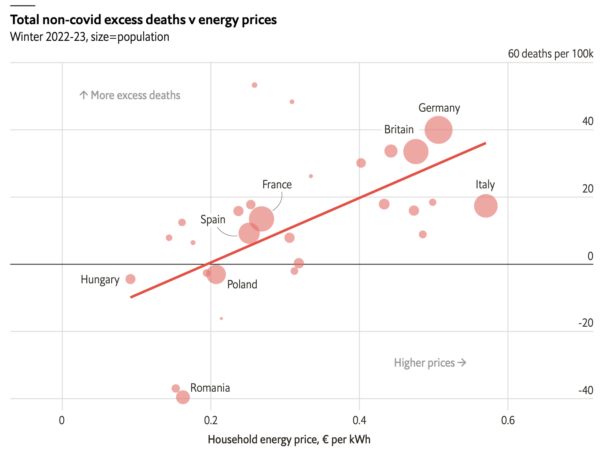

Everyone knows that Germany was the “first mover” on the net-zero bandwagon, spending more than a trillion Euros over the last 15 years on its “energiewende” (“energy revolution) only to see their greenhouse gas emissions begin rising again, and last year reviving coal-power to keep the lights on. One thing they did achieve was causing consumer energy prices to roughly double. I guess that “wind-and-solar-are-cheaper” isn’t working out according to plan.
Meanwhile, the summer heat waves got the climatistas all sweaty as usual, while we and others like Bjorn Lomborg pointed out once again that many more people die from cold winter weather every year than during summer heat waves. And so kudos to The Economist, which usually gulps down the climate cult Kool Aid, for this report:
Expensive energy may have killed more Europeans than covid-19 last winter
High energy prices can cost lives. They discourage people from heating their homes properly, and living in cold conditions raises the risk of cardiac and respiratory problems. In November The Economist predicted that expensive power might result in between 22,000 and 138,000 deaths during a mild winter. Unfortunately, we appear to have been correct.
To assess how deaths last winter compare to previous ones we have used a common measure of mortality: excess deaths. Comparing actual deaths with the number we might expect given mortality in the same weeks of 2015-19, we found that deaths across Europe were higher than expected. Across 28 European countries we investigated, there were 149,000 excess deaths between November 2022 and February 2023, equivalent to a 7.8% increase. . . If electricity last winter had cost the same as it did in 2020, our model would have expected 68,000 fewer deaths across Europe, a decline of 3.6%.
Here’s their chart for the EU:

